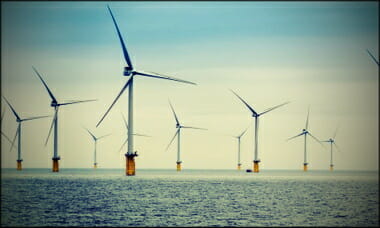A January 2007 settlement agreement intended to reduce the number of bird deaths from wind turbines at Altamont Pass, California is failing, scientists report.
As a result, environmental groups are calling for additional restrictions on wind power generation at the nation’s largest wind farm.
Thousands of Kills Annually
Wildlife groups have long objected to the deadly toll wind turbines take on birds and bats. The wind farm at Altamont, with more than 5,000 turbines sprawling over more than 50 square miles of land, has been the poster child for that problem.
Responding to environmental concerns that spawned a federal lawsuit, operators of the installation agreed in January 2007 to a series of measures designed to reduce the roughly 1,700 to 4,700 bird deaths at Altamont Pass each year.
Among the birds killed there each year are protected raptors, including golden eagles, red-tailed hawks, American kestrels, and burrowing owls.
The January 2007 legal settlement, forged among wildlife groups, wind companies, and regulators, required the wind farm operators, through a series of measures, to reduce raptor deaths by 50 percent over three years.
Scientists in December 2007 reported the thousands of wind turbines at Altamont Pass are killing raptors and other birds at approximately the same pace as before the settlement.
Wildlife Groups Object
Elizabeth Murdock, executive director of the Golden Gate Audubon Society, one of four Audubon chapters party to the settlement agreement, says the present array of wind turbines at Altamont Pass is taking an unacceptable toll on migratory and protected bird species.
“We are not trying to shut down the wind industry, but we think that there is a positive way to move forward and produce wind power while reducing bird deaths,” Murdock said.
The toll has been devastating at Altamont Pass. In the lawsuit, environmentalists cited a 2004 California Energy Commission report estimating between 1,766 and 4,721 birds were killed by Altamont wind turbines each year, equaling 47,682 to 127,467 birds over the 27-year life of the wind farm.
Many of the affected bird species are protected by state and federal laws. Some of the birds killed are protected by federal laws so stringent they do not allow the taking or killing of even a single member of the species.
Wind farm critics say the failure to enforce federal wildlife protection laws in the Altamont wind farm case is a result of environmentalists’ pressure for wind power.
Birds Lured to Death
The bird death issue is complicated by the fact that commercially viable wind farms must be situated in areas where the wind blows as frequently and steadily as possible. These locations tend also to be major flyways for raptors and migratory birds.
Even worse, the farms can actually lure birds to their grisly deaths. Rats, mice, and other rodents utilize turbine bases as nesting grounds, which in turn attracts birds of prey. When the birds of prey circle above their intended meal, they are sliced to death in midair by the spinning turbine blades.
The Audubon Society, a party to the lawsuit settled last year, noted among the birds deaths are between 456 and 1,129 raptors killed each year, including 75 to 116 golden eagles killed annually.







